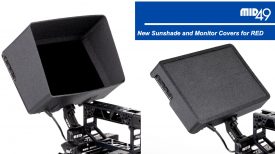
AIR’s (Advanced Image Robotics) new AIR AutoPilot, is an AI tracking add-on to the AIR One camera robot
Over the last year, AIR users have put their robots to work at the Olympics in Paris, Super Bowl LIX, the US Senate, UFC, and pro sports matchups in baseball, soccer, hockey, tennis, and motorsports. The AIR AutoPilot is the next evolution of this existing technology.
Having the ability to lock onto a subject and track them seamlessly with a robotic camera makes a lot of sense, especially for sports.
AutoPilot uses a proprietary Visual Language Model (VLM), enabling far higher accuracy and stability than traditional models. It is activity-agnostic, object-agnostic, and you can train it in real time out of the box.
Built for REMI, you can manage AutoPilot totally in the cloud at scale, from distance, with ultra-low latency. It can differentiate between similar-looking subjects, and is able to handle occlusions and crowded scenes easily.
AIR One is a cloud-native smart gimbal equipped with a 4K digital cinema camera and interchangeable lens that you can control from anywhere. It fits in a case small enough for carry on luggage, it’s light enough to mount anywhere, and it gives you more precise camera control than any other PTZ system. Set it up, plug it in, turn it on, and start shooting in a matter of minutes. AIR One supports any micro 4/3 lens up to 300mm in length, flies a number of different camera models, can connect directly to the internet or a traditional hardware switcher, and seamlessly integrates into any production environment.
Above you can see a quick how-to setting up video where an AIR One robot sends control over LAN and video/audio over fiber tie lines back to video control room for on-prem hardware-based switching.
At NAB 2025 next month, AIR will be demonstrating joystick control via Skaarhoj integration. And users who want some elevation with their rotation can get it with Cartoni Lifto.





